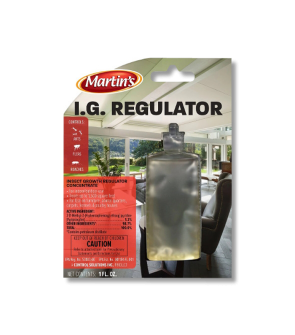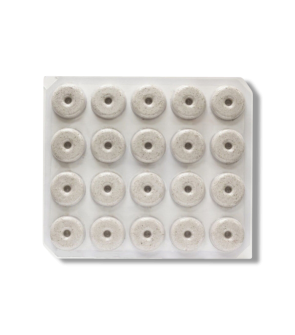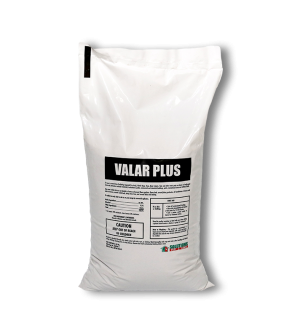Crane Fly vs. Mosquito
Most Effective Products
Crane Fly Vs. Mosquitoes
This page is a general article that discusses the differences and some similarities between two pests commonly mistaken for the other - the crane fly and mosquito. By reading this DIY guide, you can fine professional products, information, and have a better control over your mosquito or crane fly infestation.
All homeowners are personally familiar with mosquitoes that arrive after prolific periods of rainfall with their flapping wings, dangling legs, and bouncing off objects and yourself like balloons. Another pest that looks just like mosquitoes and mimics their annoying hovering is the crane fly.
Many individuals would assume these pests are just large mosquitoes and have the same risks, but in reality crane flies are harmless. Both the crane fly and mosquito are pests that fall into the Diptera class of pests, but are different species of pests.
Here in this detailed guide you can learn how to get rid of mosquitoes and crane flies and discuss their differences so you can better control them.
Identification

Before you proceed with a treatment you will need to know the physical differences between crane flies and mosquitoes. Misidentification can lead you to using the wrong products or unnecessary treatments, which can be a waste of your time and money.
For a physical reference, examine the image above. On the left is the crane fly and on the right is the mosquito.
What Do Mosquitoes Look Like
Everyone knows mosquitoes are small, flying insects that feed on our blood at any opportunity.
Female mosquitoes need blood for reproduction and are vectors for diseases like Malaria, West Nile Virus, and Yellow Fever.
Mosquitoes range from ⅛ of an inch to ¼ of an inch in length. Only the females will have a long, piercing mouthpart that they use to suck blood with. When at rest, the wings are typically as long as the body and run parallel to the abdomen.
In addition to adult mosquitoes, look out for their larvae. Mosquitoes need stagnant water in order to breed and develop in. These only grow up to be ¼ of an inch in length. Mosquito larvae are aquatic, legless, and worm-like. They have hairy bodies with a head, thorax, and abdomen.
What Do Crane Flies Look Like
Crane flies, also called Mosquito Hawks, are lanky, long-legged flies. The adults do not need to consume blood to reproduce, however, most species are incapable of eating and die just a few days into maturity.
Crane flies grow up to be 2 inches in length. Both male and female crane flies lack piercing mouthparts, and many species cannot even eat after reaching maturity. They have large wings that are often longer than the abdomen, and when at rest, the wings lay in an outward angle.
The adult crane flies may be harmless, but look out for their larvae. Crane flies lay their eggs in soil so the larvae can feed on grass to develop.
Crane fly larvae are also referred to as “leatherjackets.” They grow 2 to 3 inches in length. These larvae lack legs, and they can be white, grey, green, or brown. These larvae also have finger-like appendages at the tail ends of their bodies.
Habitat

Knowing where crane flies and mosquitoes live and breed in will better help to know where to focus pesticide applications. This also aids in more proper identificatio if you can visibly see the pest itself.
Where Do Crane Flies Live
While adult crane flies are harmless, their larvae must feed on grass in order to develop. In heavy infestations, brown patches can form on your lawn quickly and unexpectedly.
Much like adult mosquitoes, adult crane flies will live near sites that have moisture. The only difference is that adult crane flies will not feed on the blood of people or animals decaying wood and vegetation.
Despite their name, crane flies will not eat other mosquitoes.
Where Do Mosquitoes Live
Adult mosquitoes will live underneath tall or overgrown vegetation with shade or near sites of standing water like bird baths, fountains, wet leaf litter, rain gutters, or other objects in yard that can gather water.
The larvae of mosquitoes will grow and develop in water sites until they reach adulthood. Unlike crane flies, the female mosquito will bite and feed on the blood of people and animals.
Male mosquitoes can only feed on the pollen of ornamentals due to their proboscis being smaller than the female of their species.
How to Treat Crane Flies
Step 1: Apply Valar Plus
 Crane fly control focuses on the larvae. As adults, they have already done any damage they would do, but the next generation still needs to hatch and consume grass to pupate into adults.
Crane fly control focuses on the larvae. As adults, they have already done any damage they would do, but the next generation still needs to hatch and consume grass to pupate into adults.
Target the surface and sub-surface levels of your soil by applying a product like Valar Plus Bifenthrin Granules. Valar Plus is labeled to kill many pests that infest turf and ornamentals, including crane flies.
With a push spreader, apply the product’s labeled rate of 4.6 pounds of product per 1,000 square feet of treatment area.
Evenly distribute the product by broadcasting half your granules in parallel lines once across your area, then broadcast the other half at a perpendicular angle to cover the area in its entirety.
Once you've finished your granular application, water it into the soil with an application of Supreme IT and Martin's IGR Insecticide.
We recommend you make this application with a hose-end sprayer to apply enough water to drive the Valar Plus granules into the soil.
Step 2: Apply Adulticide and IGR Insecticide
 To get rid of crane flies, apply 1 fl. oz. of Supreme IT and 0.67 fl. oz. of Martin's IGR Insecticide per gallon of water per 1,000 sq. ft. of treatment area.
To get rid of crane flies, apply 1 fl. oz. of Supreme IT and 0.67 fl. oz. of Martin's IGR Insecticide per gallon of water per 1,000 sq. ft. of treatment area.
When spraying liquid products, be sure to apply on calm days when wind speeds are low to minimize drift.
These two products along with Valar Plus will provide full coverage throughout your turf and target pests in different stages of their life cycles.
While Valar Plus and Supreme I/T eliminate adult crane flies and other pests on contact with the active ingredient, Martins I.G. Regulator will stunt the growth of juvenile pests and prevent from reaching reproductive maturity.
How to Treat Mosquitoes
Step 1: Remove Water and Moist Sites
 The best way to stop mosquitoes from breeding on your property is to address any excess moisture and remove sources of standing water. Mosquitoes need still water in order to breed.
The best way to stop mosquitoes from breeding on your property is to address any excess moisture and remove sources of standing water. Mosquitoes need still water in order to breed.
If your lawn often pools water after rain, there are several ways you can improve its drainage. Core aeration removes plugs of soil, increasing air flow and allowing for more water to seep deeper into the earth.
Additionally, rake away leaves and dethatch your lawn to prevent lawn litter from retaining water. Trim away overgrown tree branches to encourage evaporation. Mowing your lawn taller allows the grass to spend more energy developing its roots.
When you water your lawn, water properly by providing 1 to 1-and-a-half inches of water all at once, once a week, and in the morning.
Watering in the morning allows time for the water to seep into the soil without evaporating in the afternoon sun’s heat.
Step 2: Treat Water

In addition to improving your turf’s drainage, there are also products you can use to eliminate mosquitoes on your property.
To control mosquitoes near the bodies of water you can’t drain, we recommend you use a natural larvicide like BTI Mosquito Dunks. These are great to use in bodies of water like artificial or natural ponds, unused swimming pools, or even in flower pots right after it rains.
When set on top of water, the mosquito dunk will gradually release a bacterium known as BTI. Larvae in the water will consume the bacterium and die within 48 hours.
BTI is lethal only to mosquitoes and some flies, and will not affect people, pets, or wildlife, including fish.
You can use the product’s labeled rate of 1 dunk to treat 25 to 100 square feet of surface area of standing water.
Step 3: Broadcast Supreme IT with Martin's IGR Insecticide
 After the standing water in your yard has been treated with BTI Mosquito Dunks move on to treating the turf, ornamentals, and perimeter around your home with an adulticide insecticide.
After the standing water in your yard has been treated with BTI Mosquito Dunks move on to treating the turf, ornamentals, and perimeter around your home with an adulticide insecticide.
Apply 1 fl. oz. of Supreme IT and 0.67 fl. oz. of Martin's IGR Insecticide per gallon of water per 1,000 sq. ft. on ornamentals and exterior perimeter surfaces of your home.
Begin spraying at the back of the yard and work your way to the front for easier coverage. Spray mulch beds, flower beds, ground covers, and ornamentals. When treating ornamentals spray over and under the leaves. Spraying under the leaves is important because mosquitoes will typically rest on the shaded undersides of leaves.
To make a perimeter application around your structure, spray 3 feet up the foundation and 3 feet out on the ground near it. We suggest using a handheld pump sprayer to better control drift and make more precise applications in crevices and voids. Be sure to also treat around window and door frames, eaves, soffits, cracks/crevices in foundation, and around plumbing penetrations.
Key Takeaways
Do Crane Flies Keep Mosquitoes Away
- Crane flies will not eat mosquitoes so we recommend removing conditions attracting these annoying flying pests and applying the appropriate pesticide.
Are Crane Flies Harmful
- Crane flies cannot hurt you and will not feed on your blood like mosquitoes. Adult crane flies can only eat decaying vegetation and the roots, shoots, and leaves of your lawn in their larvae stages.
How do Crane Flies and Mosquitoes Differ
- In terms of looks, a crane fly is much larger and longer than an average mosquito. Another distinction is their feeding habits. Crane fly larvae feed on plants and their adult stages lack piercing mouthparts while the mosquito feeds on blood and has piercing mouthparts.















































































































































































































































































































































































































































































































































